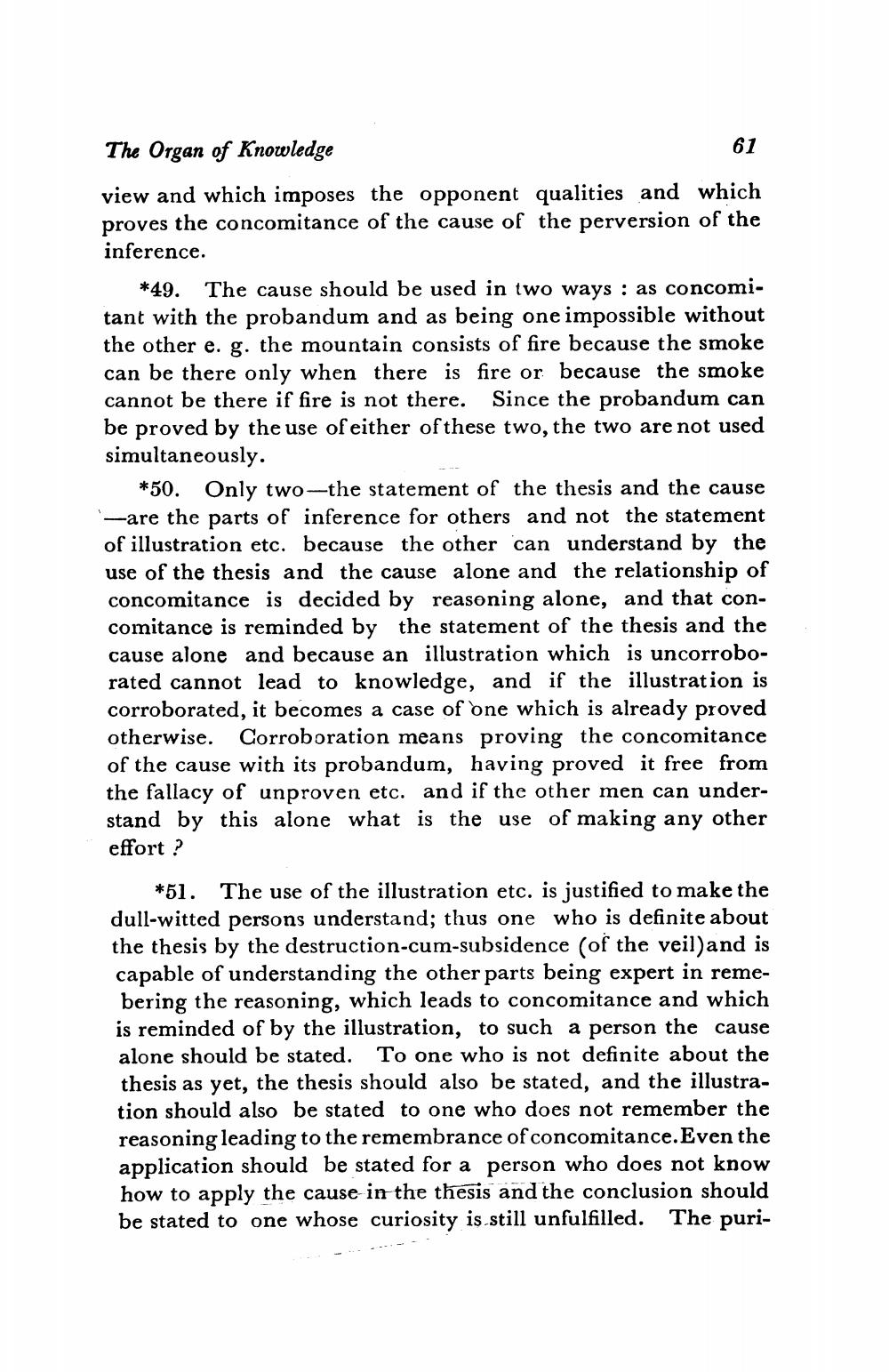________________
61
The Organ of Knowledge view and which imposes the opponent qualities and which proves the concomitance of the cause of the perversion of the inference.
*49. The cause should be used in two ways : as concomitant with the probandum and as being one impossible without the other e. g. the mountain consists of fire because the smoke can be there only when there is fire or because the smoke cannot be there if fire is not there. Since the probandum can be proved by the use of either of these two, the two are not used simultaneously.
*50. Only two-the statement of the thesis and the cause --are the parts of inference for others and not the statement of illustration etc. because the other can understand by the use of the thesis and the cause alone and the relationship of concomitance is decided by reasoning alone, and that concomitance is reminded by the statement of the thesis and the cause alone and because an illustration which is uncorroborated cannot lead to knowledge, and if the illustration is corroborated, it becomes a case of one which is already proved otherwise. Corroboration means proving the concomitance of the cause with its probandum, having proved it free from the fallacy of unproven etc. and if the other men can understand by this alone what is the use of making any other effort ?
*51. The use of the illustration etc. is justified to make the dull-witted persons understand; thus one who is definite about the thesis by the destruction-cum-subsidence of the veil)and is capable of understanding the other parts being expert in remebering the reasoning, which leads to concomitance and which is reminded of by the illustration, to such a person the cause alone should be stated. To one who is not definite about the thesis as yet, the thesis should also be stated, and the illustration should also be stated to one who does not remember the reasoning leading to the remembrance of concomitance. Even the application should be stated for a person who does not know how to apply the cause in the thesis and the conclusion should be stated to one whose curiosity is still unfulfilled. The puri




